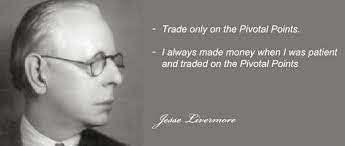My trading strategy is due for a change. It is time for me to sit tight.

“The measure of intelligence is one’s ability to change”- Albert Einstein
Can you sense it? Do you feel it? If you have been following the markets long enough I am sure you have a sixth sense sending signals to your brain that something, maybe you are not sure what, but something is different about these current markets.
For the last 2.5 years, there was a very steady indicator I would normally use in trading markets. About 85-90% of the time if the Vix was red, the 10 year yields were red, and the DXY was red, the market would usually be green that day. The opposite was also true. However, lately, the VIX, or the volatility index, has not been moving in line with the markets. There may be a few reasons for this, but my general impression is that there are large institutional entities attempting to suppress the VIX in order to stop an all out crash of the equity markets.
This market is extremely volatile and yet, the VIX does not match the way the market is moving. This is concerning for a few reasons, the first of which is manipulation occurring in the so-called “free markets” and secondly because it affects my trading if one of my indicators is no longer reliable. Other big traders have noticed this change as well. Howard Marks calls this current market one of the biggest changes that have occurred in markets over the last 50 years. Here is his article https://www.ft.com/content/1590f756-dfeb-4a30-b5e3-2f404e54312a .
Now, a trader has a few options when confronting a significant change in the markets. One, you can stick to what you have been doing and hope it works again, two, give up on trading, or three, get back to the drawing board and figure out what the heck is going on. I have chose option three. While I observe the market and let the market find a direction, I will be researching, observing, and waiting in cash.

As readers of this newsletter know, my trading strategy generally consists of using options and futures to attempt to leverage gains in the market at times when I suspect the options are mis-priced. Additionally, I will make day-trades on market momentum following macro-level events. I have been fairly successful following these strategies, but have struggled for the last two months with an account that is essentially flat. In the last two months I have entered short and closed my position just before a 7% downturn, went long too late, went short too early, etc. etc. I have been doing better than most long-term investors who are just sitting and idly watching their accounts lose value, however, it is time to step back and assess my trading strategy.
I have come to the conclusion that this market is too volatile to trade with any significant leverage and the markets are moving in paradoxical ways. At this juncture I think it is best for me to be completely out of the market. The opportunity to short is over as most of the bubble stocks like Arkk, Coinbase, and Carvana are down nearly 90%. The S&P has fallen nearly 20% (although I think we likely fall further) and the opportunity to go long is probably 6-9 months away, or more in my opinion.
For me, the next few months are a time to watch and observe the market. Additionally, I will be gathering as much capital as possible in order to have “dry powder” ready to pounce, once market conditions look favorable on the long side again. We are in this Bermuda Triangle of sorts where the market could go any direction, even flat, and most traders will get eaten up in the chop. My plan is to wait, watch and observe, then go long when it the market has signaled a long term bottom. It is a futile endeavor to attempt to trade everyday hoping to catch small moves. I am completely done attempting this. The big money is made in trading the pivotal points, where the market shifts from bear to bull and vice versa.

My plan is to sit tight, wait patiently for all the other traders to get chopped up, save capital and enter the market at the next pivotal point on the long side. I will make sure to watch the market closely even when not invested in order to know when this pivotal point will occur. You have to know when to sit tight and when to pounce. I will be sitting tight until the signal is obvious. That will generally occur at the height of panic or when the Federal Reserve starts to cut rates. From there, I will know we are getting close.
-Russell
______________________________________________________________________
**As Always, this article was not financial advice. For financial advice, please consult with a licensed financial advisor for your particular financial situation.**

